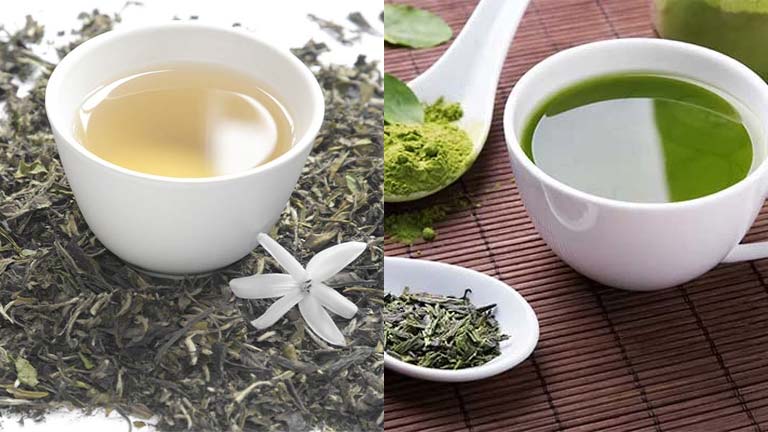
Both healthy, both light, and both rich in antioxidants–white and green tea are two sides of the same coin. Camellia sinensis is the source of white tea and green tea, which are two distinct types of tea produced from the same plant. They can have a comparable amount of caffeine, antioxidants, and taste.
Green and white teas have similar health benefits and a delicate flavour profile, but which one is superior?
What Is The Distinction Between White And Green Tea Processing?
Black, dark, or oolong tea are all more heavily processed than white or green tea. White tea is minimally processed. It frequently has a very light, almost transparent liquor when prepared correctly. The name, therefore, derives from the fact that it is white. Green tea has greater processing. After harvesting, tea leaves are withered outside to produce white tea. Then they’re dried and sorted indoors. Green tea is first withered, then it’s stopped from oxidizing, rolled, dried, and sorted. Some green teas are not withered; nevertheless, all-white teas are.
Because of the way, it’s processed, high-quality white tea – especially Silver Needle – will include a lot of hairy buds. And this is an intriguing aspect in and of itself. Despite the fact that white tea processing appears to be simple, it isn’t. A low-quality white tea is more likely to be found than a low-quality green tea. This may be why white tea isn’t as well-known as green tea. Green tea is the most popular type of tea, but more and more people are starting to order white tea online.
Green Tea Farming Seasons vs. White Tea Farming Seasons
White tea is mostly cultivated in China, especially in the Fujian province. Green tea is also produced in a variety of countries, including India and Sri Lanka. White tea is typically picked in the spring and early summer. Green tea may also be collected in the fall. During the days of early spring, the highest grade Silver Needle and first flush green teas are plucked. Other white teas are picked later, around May.
Is White Tea’s Caffeine Content Higher Than That of Green Tea?
Although white tea is typically considered to be a low-caffeine beverage, this isn’t always the case. In fact, white tea contains more caffeine than green tea. It may even have more caffeine than dark tea on rare occasions.
It’s difficult to say how much caffeine is in your cup of tea. However, by looking at the leaves, you may estimate the amount. For example, teas with younger leaves have more caffeine than those with older and larger mature leaves. In general, teas harvested in the spring and summer are more likely to have caffeine. Your cup will most certainly contain a higher quantity of caffeine if you use split leaves or tea dust. White tea is an excellent choice for those looking to enjoy a delicately sweetened drink with the benefits of antioxidants and caffeine.
Is White Tea A Better Option Than Green Tea?
Both white and green teas are high in antioxidants. They’re both produced from the same plant, and they share most of the health benefits. White tea is frequently referred to as a “beauty tea,” while green tea has the moniker of a “weight-loss tea.” Both have anti-ageing, and antioxidant effects, and can be beneficial to your skin. However, unless you incorporate exercise and a nutritious diet into your routine, neither one will significantly help. Pure white and pure green tea have almost no calories. If you’re drinking tea for its health benefits, don’t put it in sugar, honey, or milk.




